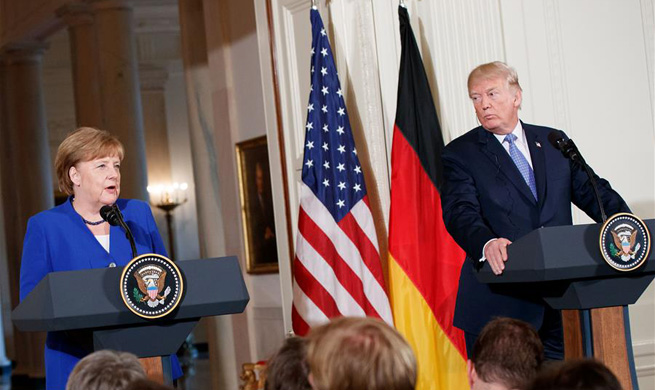BEIJING, April 27 (Xinhua) -- Profits of China's major industrial firms maintained steady growth but at a slower pace of 11.6 percent in the first quarter of 2018, data showed Friday.
The growth was smaller compared with a 16.1-percent increase registered for January-February period.
In March alone, combined profits at industrial companies each with annual revenue of more than 20 million yuan (about 3.2 million U.S. dollars) amounted to 589.75 billion yuan, up 3.1 percent from one year earlier, according to the National Bureau of Statistics (NBS).
NBS statistician He Ping attributed the slower profit growth in March to the lagging effect of the Spring Festival holiday and slower growth in prices of industrial products.
Among the 41 industries surveyed, 25 posted year-on-year profit growth during the first quarter.
Manufacturing, which accounted for 83.9 percent of the total industrial profits, saw its combined industrial profits expand 8.2 percent. The mining industry rose 36.1 percent, while those of power generation, heating, fuel gas and water supply companies rose 30.4 percent.
He Ping said Friday's data revealed improving profitability at industrial enterprises, and the stable and sound growth momentum in the sector would remain unchanged.
Zhu Jianfang, chief economist with Citic Securities, estimated the industrial profits would increase 10-12 percent this year from 2017, while value-added industrial output would expand 6-7 percent.
Industrial output expanded 6 percent year-on-year last month, with the growth easing from 7.2 percent for January-February period.
CICC economist Liu Liu expected the industrial output growth to pick up to 6.5 percent in April, citing rising daily coal consumption by major power generation firms this month.
By the end of March, total assets of the industrial firms reached 106.7 trillion yuan, up 7.1 percent from one year earlier, while their liabilities climbed 5.8 percent to 60.2 trillion yuan.
He said the deleveraging had continued apace in the sector. The companies' debt-to-asset ratio dipped 0.8 percentage point from one year earlier to 56.4 percent by the end of March, while that of state-owned enterprises stood at 59.5 percent, down from 61 percent by the end of March 2017.
















